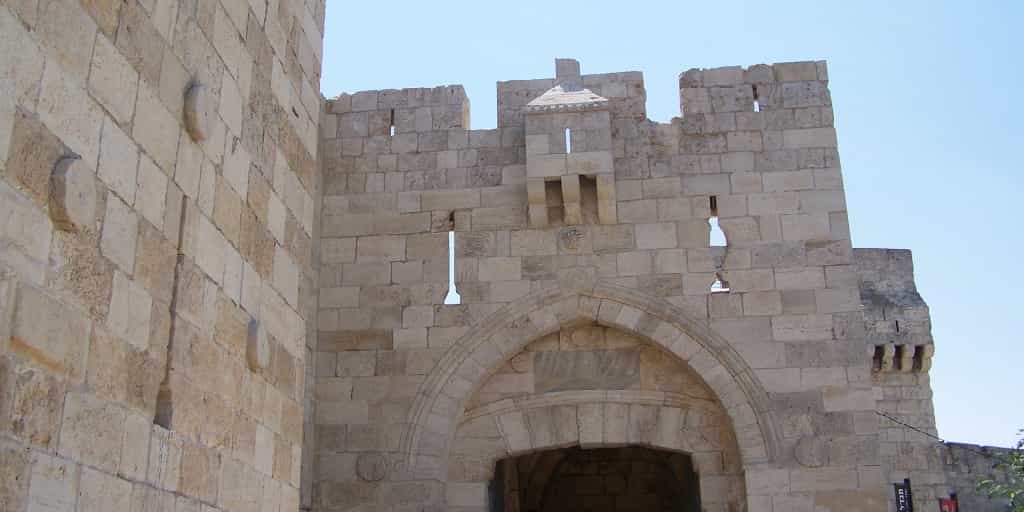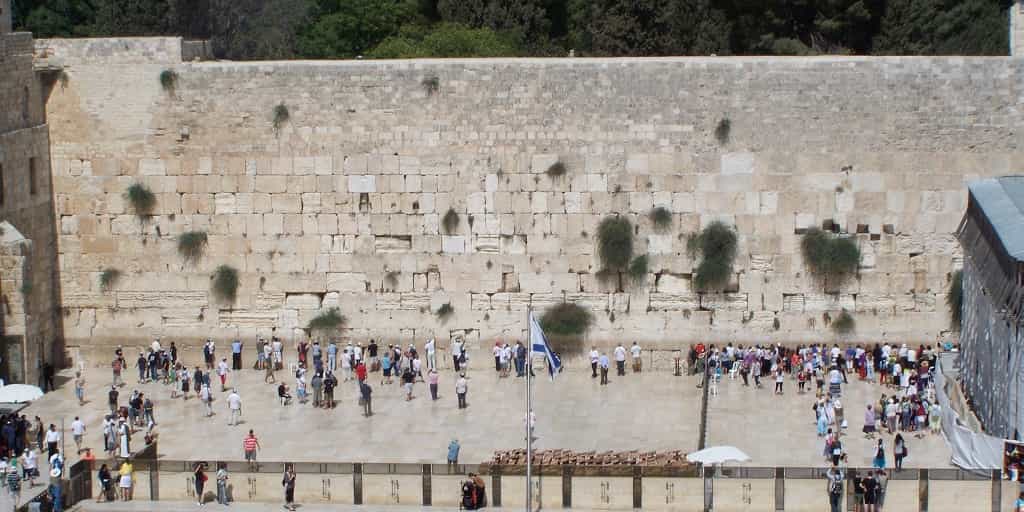Jerusalem Must See Day Trip
Jerusalem is an absolute when you come to Israel. But why? It is a 3,000 year old city that began as a small wayside town when it became the City of David and grew into a city with something to see in every square inch of the city. It is the capital of country, and holy to Judaism, Christianity, and Islam. Abraham almost sacrificed his son, Isaac, on Mount Moriah before King Solomon built the Temple Mound. Jews built the First and Second Temples in Jerusalem. It was the capital of the first kingdom of Israel.
While the Second Temple was still standing, Jesus made many visit to Jerusalem. It is also the site where Jesus was crucified, resurrected, and ascended into heaven. Muhammad came to the Temple Mound and ascended to heaven to talk to Allah and the prophets. If this is not enough, the list goes on. We can’t see it all, but there are some sites you CAN’T miss. So let’s get started!
Jaffa Gate
We are going to begin the day at the Jaffa Gate of the Old City of Jerusalem. Here we will begin to explore why Jerusalem is so important, so holy, to Judaism. Why are there walls around the old city? What made this place so holy?
With 3,000 years of history, there is no lack of answers to these questions. Sulieman the Great built the walls of Jerusalem in the 1500’s. The builders put gates in the walls in order for people come in and out. Now Sulieman and his people built the wall surrounding the city to protect the residents at night, from attackers, etc. We call Jaffa Gate this because the road exiting the Gate leads to the city of Jaffa. When we start at Jaffa Gate we will begin to understand Jerusalem’s roots and present.

Four Sephardic Synagogues
We will continue to the Four Sephardic Synagogues, four actual congregations within one building! Today, one of the congregations is Ashkenazim, while the other three are Sephardi. But in the beginning all four of them were Sephardi. Why does that matter? Ashkenazi, or Eastern European, Jews have didn’t practices in prayers, holidays, and customs from Sephardic Jews, or Jews with roots from Iberian Peninsula.
Here we can see the differences first hand. We will take the opportunity to discuss the differences between Ashkenazi and Sephardi synagogues and practices. It is important to understand why the synagogue is such a central place in Jewish life. The synagogue has been a social center, a spiritual center, and center of development of Judaism since the destruction of the Second Temple 2,000 years ago. In this light we will talk about what we see and use in a synagogue today. To learn more, check out this website.
Churva Synagogue
The Churva Synagogue is a cornerstone of the Jewish Quarter of Jerusalem. Built in the 1700’s the synagogue was destroyed and rebuilt several times, in part because tensions between the Jewish and Muslim communities. The Jordanians destroyed it the last time during the War of 1948 when Jordan took over East Jerusalem. When Israel reunited the city of Jerusalem in 1967, the state rebuilt the synagogue to remember the synagogue’s history. It is a great window into history and the different chapters of the city. It is a beautiful building with a fascinating history. We will talk about it’s history, and use it to better learn about and understand Jerusalem’s history. For more information, click here.
Kotel
The Kotel is the holiest site today in the Jewish world. The Kotel is holy because it is as close as we can get to where the holy of holies was located. What it the holy of holies? It is where the presence of G-d lived on the Temple Mound. The Kotel is the last retaining wall of the Second Temple Mound still standing, and it was the only part of the Temple Mound that the Romans couldn’t destroy.
We call it the Western Wall in English because it was the Western retaining wall of the Temple Mound. The full wall was 10 times longer than what we see today, a total of 490 meters. That is 5.4 football fields! So why didn’t the Romans not destroy it? Was it because they couldn’t, or because they figured they destroyed everything else? We will discuss the importance of this site, its history, and have some spiritual time or prayer at this holy site.

Lunch at Mahane Yehuda Market
After our morning in the Old City, we will drive to Jerusalem’s famous open- air market, Mahane Yehuda. It began on the border of Jerusalem and Arab villages as a place for both Jews and Muslims to do business. Coexistence flourished so much that the Arabs knew the Yiddish of the Jews and the Jewish businesspeople and customers knew the Arabic of the Arab businesspeople and customers. From a small market it grew into a well-known, beloved market with many stores, and restaurants. Here we will have time for lunch and a bit of shopping. For more about Mahane Yehuda Market.
Yad Vashem
After lunch we will continue to Yad Vashem, Israel’s Holocaust Memorial. The Museum displays the chronology of World War II. The museum divided the exhibitions by topics ranging from the rise of Hitler, the ghettos of Europe, the death camps, and the end of the War. Walking through the museum, we will discuss not only the events, but how we remember them. We will also take the time to remember the events of the Holocaust at some of Yad Vashem’s memorials. There is a memorial for the Righteous Gentiles, who saved thousands and thousands of Jews during the War. We will visit this memorial to remember these honorable people. We will visit the Children’s Memorial, which remembers the 1 million Jewish children murdered during World War II. For more information about Yad Vashem click here.
Mount Herzl National Cemetery
We will end the day at the Mount Herzl Cemetery, Israel’s National and Military Cemetery. Prime Ministers, Presidents, Speakers of the Knesset, Presidents of the Jewish Agency, and Zionist Leaders are buried here.
We will visit Prime Ministers who are buried here, like Yitzhak Rabin and Golda Meir. We will remember some of Israel’s early Zionist leaders, including Theodore Herzl, founder of the Zionist movement in Europe. While he did not live to see the day Israel was established, he was buried here in 1949. The Mount Herzl Cemetery is also where soldiers who are killed in service are buried. However, there are military sections of other cemeteries as well. We will end to visit the soldiers we lost to honor what they gave for this country. We will learn and understand how Israel remembers them. To learn more click here.